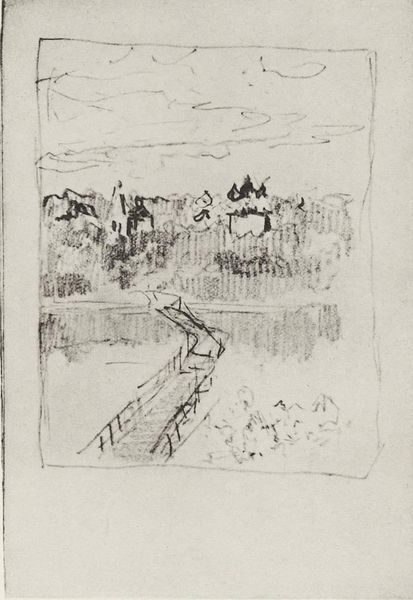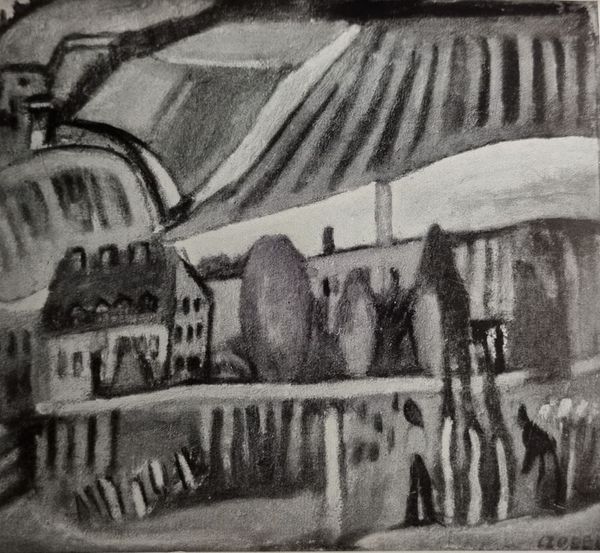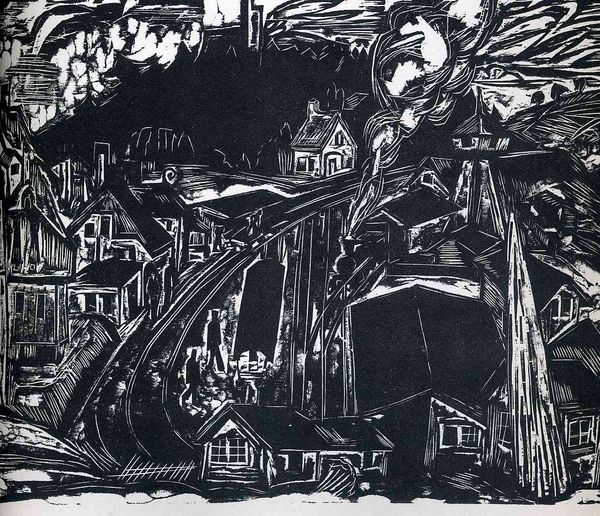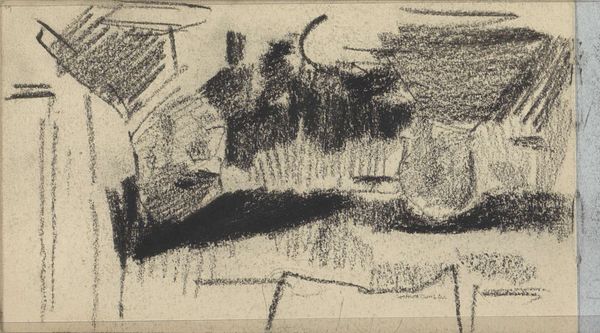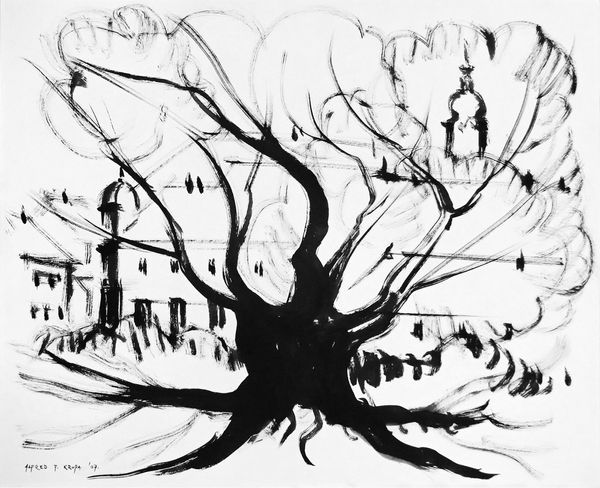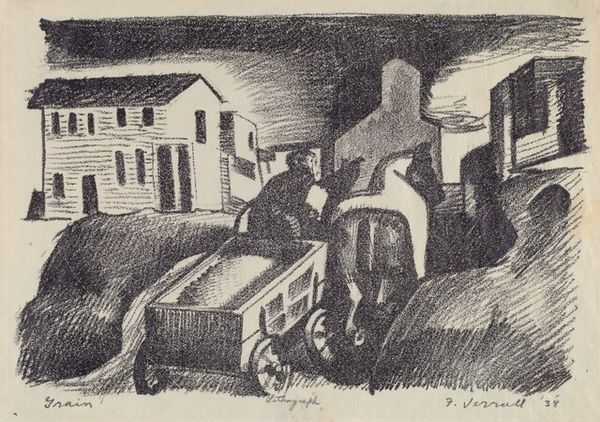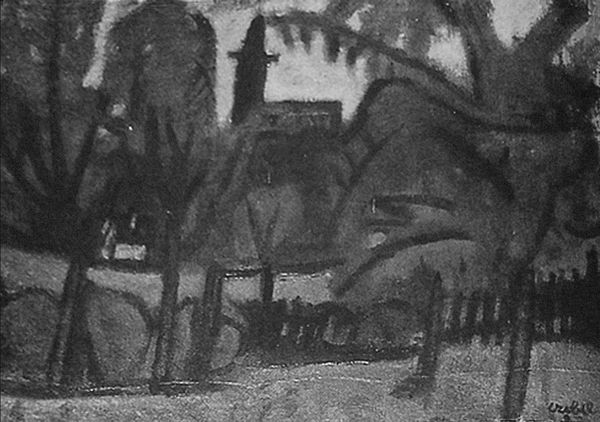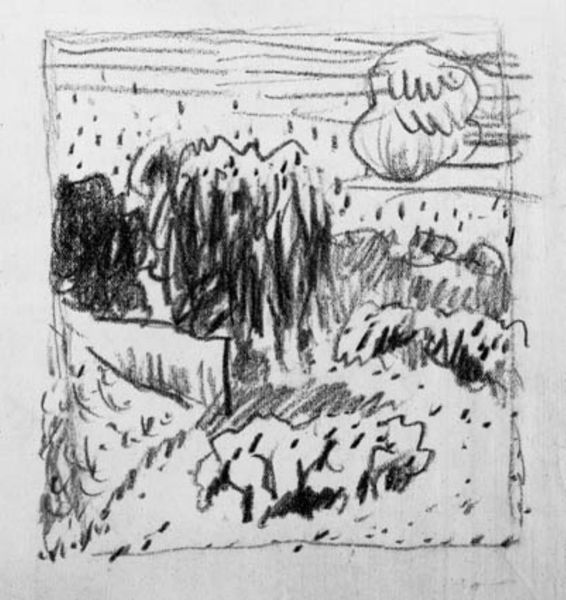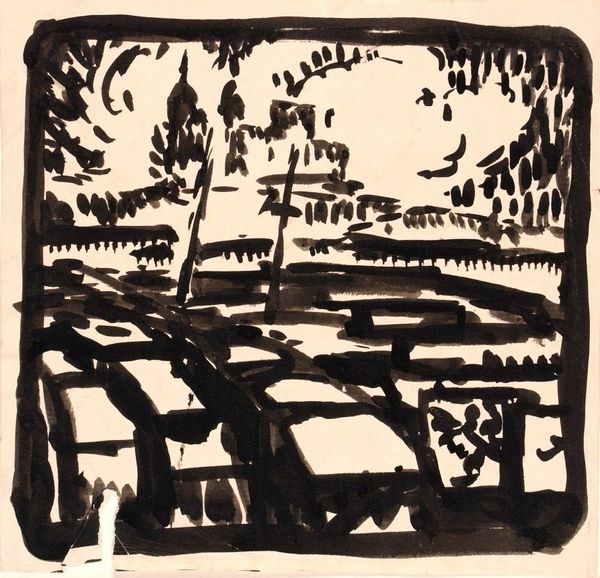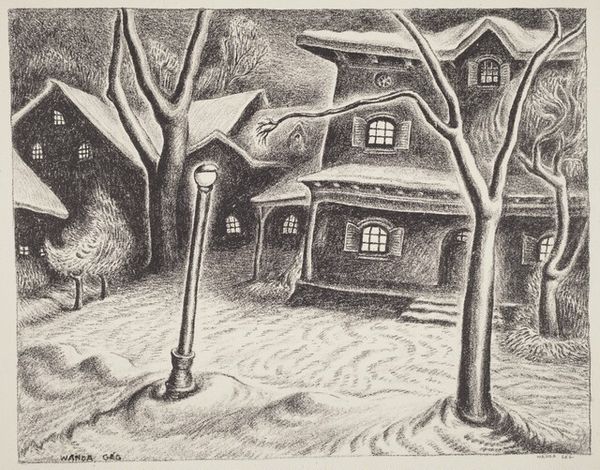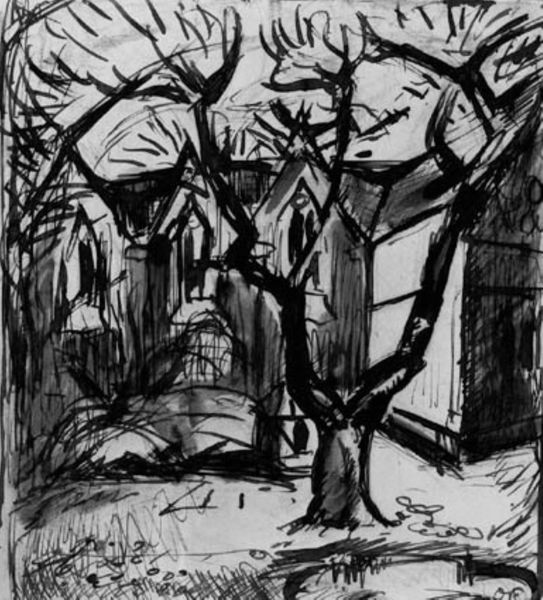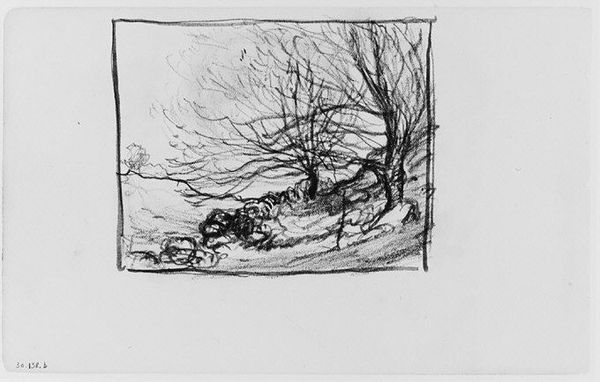
drawing, pencil, charcoal
#
drawing
#
pencil sketch
#
landscape
#
charcoal art
#
geometric
#
pencil
#
expressionism
#
charcoal
Copyright: Public domain
Editor: So, this is Kazimir Malevich’s “House in the Wall,” created around 1911 using pencil and charcoal. It strikes me as intensely melancholic, with stark contrasts and looming shadows despite being a landscape. What's your interpretation of this drawing? Curator: Looking at "House in the Wall," it's impossible to ignore the social context brewing in pre-revolutionary Russia. The starkness, as you noted, isn't just aesthetic; it's reflective. Consider how the geometric forms challenge the idyllic landscape tradition. Does this feel like a celebration of the rural, or a critique of its harsh realities, the looming shadow potentially symbolizing political unrest? How does Malevich engage with the visual language of expressionism to convey a sense of unease or perhaps even alienation? Editor: That’s interesting; I hadn’t considered it from that angle. I saw it as a fairly straightforward depiction of rural life, though a bit bleak. But your points about social commentary...the rigid, almost prison-like bars in the fence… that could signify confinement, not just physical but social. Curator: Exactly! The house isn’t just a building; it becomes a symbol loaded with historical weight. What happens when we start questioning the assumed narratives of nation, home, and belonging? Even the choice of seemingly simple materials like pencil and charcoal can speak to an attempt to connect with the "authentic" lives of the peasantry, a recurring theme among many early 20th-century avant-garde artists. Editor: I see now. So, the drawing acts as more than just a picture; it questions the whole system in place at the time. It definitely opens up new avenues for understanding Malevich's later, more abstract work. Curator: Precisely. It invites us to unpack the complicated relationship between art and lived experience, prompting a deeper engagement with the societal structures shaping artistic expression. Editor: That's changed how I look at it completely. Thank you!
Comments
No comments
Be the first to comment and join the conversation on the ultimate creative platform.
